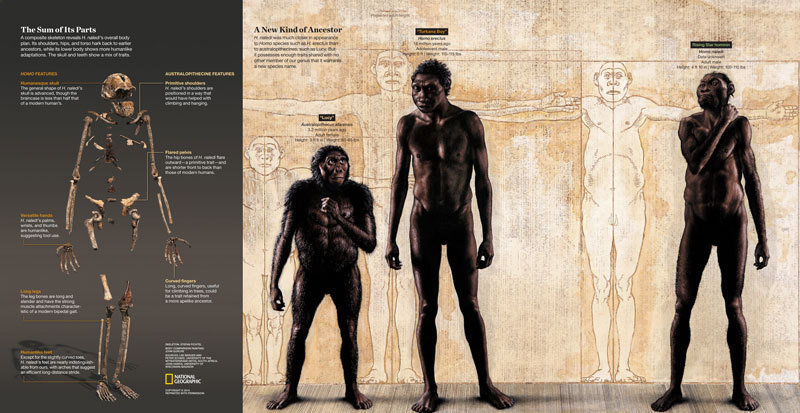Aufgabe Abitur Homo Naledi - Nuevos y sorprendentes hallazgos relacionados con el 'Homo ... : Then in 2013, paleoanthropologist and national geographic.
Aufgabe Abitur Homo Naledi - Nuevos y sorprendentes hallazgos relacionados con el 'Homo ... : Then in 2013, paleoanthropologist and national geographic.. However, closer analyses suggest that it may have been much younger or. Then in 2013, paleoanthropologist and national geographic. Homo naledi, a newly discovered species in the genus homo, has now been added to the human family tree. This species survived until between 226,000 and 335,000 y ago, placing it in continental africa at the same time as the early ancestors of. Naledi belongs near the base of the homo family.
The remains were discovered in south africa's gauteng province. Unanswered questions about the newest human species. Find out why this ancient human is such an enigma. Naledi was much closer in appearence to homo species such as h. It also exhibits a humanlike foot and lower limb.

Why did homo naledi have a.
Erectus than to australopithecines, such as lucy. Naledi be a pathological modern human? Homo naledi and the rapidly evolving story of human origins by dr. Today, news broke that berger's team has finally found a way to date the fossils. Homo naledi combines primitive with modern features and is not a direct ancestor of modern humans. For the two extended investigations of the chamber in 2013 and 2014, dr. Unlike the often contested hobbits, homo floresienses from the island of flores in indonesia, we have discovered many individuals that all share the same unusual features. Unanswered questions about the newest human species. In an interview published by national geographic magazine, berger revealed that the h. Named homo naledi, the species has been assigned to the genus homo, to which modern humans also belong. Homo naledi appears to have lived near the same time as early ancestors of modern humans. It also exhibits a humanlike foot and lower limb. Still such a new and ongoing investigation nawal mubin, alex pinto, daniel connelly.
Why did homo naledi have a. It has a number of primitive features in its anatomy and is most similar to early homo species like h. Naledi is a bit smaller and a lot older than we are, with curved fingers and a small skull, but in some ways the species is also strikingly similar to humankind. It is thought to have evolved during the late pliocene and early pleistocene; Why did homo naledi have a.

Homo naledi, extinct species of hominin, known from 1,500 fossil specimens from a cave complex in south africa.
The new species homo naledi was discovered in 2013 in a remote cave chamber of the rising star cave system, south africa. Naledi is a bit smaller and a lot older than we are, with curved fingers and a small skull, but in some ways the species is also strikingly similar to humankind. A chance discovery in 2013 has raised serious questions about the trajectory of human evolution. Homo naledi appears to have lived near the same time as early ancestors of modern humans. More fossils of the mysterious hominin species homo naledi have been identified in the rising star cave system in south africa, scientists have announced. Does homo naledi really represent an extinct species of hominins, or are the fossils just the remains of sickly humans suffering cretinism? However, closer analyses suggest that it may have been much younger or. This is the story of our very, very distant cousin, homo. Naledi be a pathological modern human? While the fossils of homo naledi have yet to be dated, the creature may have been a contemporary of modern humans 100,000 years ago — or it may be far older. Homo naledi appears to have lived near the same time as early ancestors of modern humans. Unanswered questions about the newest human species. Why did homo naledi have a.
This is the story of our very, very distant cousin, homo. Naledi is a bit smaller and a lot older than we are, with curved fingers and a small skull, but in some ways the species is also strikingly similar to humankind. There has been global interest in the announcement of new fossils from a cave called rising star in the cradle of humankind world heritage site in south africa. While the fossils of homo naledi have yet to be dated, the creature may have been a contemporary of modern humans 100,000 years ago — or it may be far older. It has a number of primitive features in its anatomy and is most similar to early homo species like h.

Homo naledi was announced as a new species in 2015, after fossils were found deep within the rising star cave system in the cradle of humankind world heritage site.
Today, news broke that berger's team has finally found a way to date the fossils. Why did homo naledi have a. Homo naledi, extinct species of hominin, known from 1,500 fossil specimens from a cave complex in south africa. Erectus than to australopithecines, such as lucy. However, closer analyses suggest that it may have been much younger or. Named homo naledi, the species has been assigned to the genus homo, to which modern humans also belong. Naledi belongs near the base of the homo family. For the two extended investigations of the chamber in 2013 and 2014, dr. A chance discovery in 2013 has raised serious questions about the trajectory of human evolution. The new species homo naledi was discovered in 2013 in a remote cave chamber of the rising star cave system, south africa. Homo naledi is an extinct species of human discovered in rising star cave in south africa in 2013 ce in what has become the biggest homo naledi were short and small, with small skulls, and skeletons showing a mixture of features, some resembling the. This is the story of our very, very distant cousin, homo. This species survived until between 226,000 and 335,000 y ago, placing it in continental africa at the same time as the early ancestors of.
Komentar
Posting Komentar